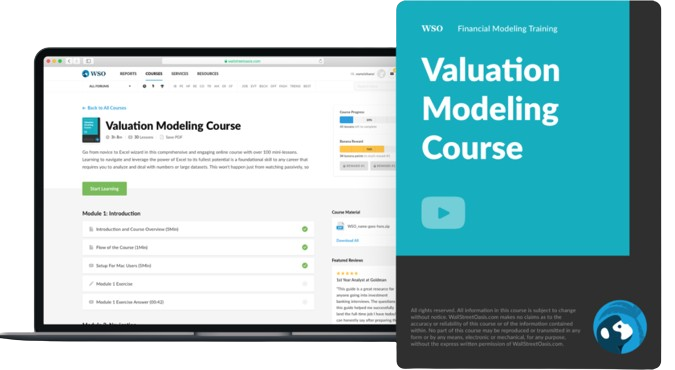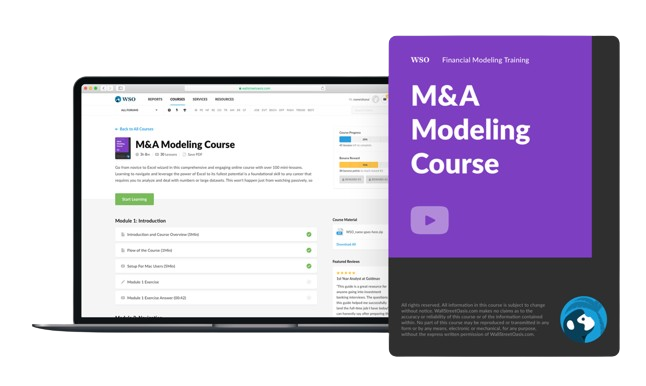Tear Sheet
A one-page overview of crucial financial information about a company
What is a Tear Sheet?
A Tear Sheet is a concise, one-page document that provides crucial financial information about a business and describes its management and services. It's like a quick snapshot of a company's financial health.

In the world of finance, a Tear Sheet, also known as a "Fact Sheet", serves as a one-page summary of a company's key details. It includes data such as 52-week high and low, market price, enterprise value, market capitalization, revenue, analyst recommendation, EBITDA, workforce size, valuation, and share price movement, etc.
In modern finance, venture capitalists create Tear Sheets for each company in their investment portfolio. They do this to help their investors, known as limited partners (LPs), understand how these companies are performing. These Tear Sheets are typically sent out to LPs on a regular basis, either weekly or monthly.
The term "Tear Sheet" has an interesting origin. It is derived from an ancient custom in which stockbrokers would tear a sheet from their summary books and present it to investors as a stock recommendation, but nowadays, everything is done online. So, a Tear Sheet can refer to any web page or digital document that contains a company's essential summary information.
There are many reliable online and print sources for stock analysis include Morningstar Professional, Valueline, Mergent Manuals, and S&P Capital IQ, among others.
For instance, Mergent manuals, formerly Moody's Manual, offer details on over 22,000 domestic and international publicly traded corporations. Long-term investors strongly suggest Value Line as it has the best-structured tear sheets.
Key Takeaways
- A tear sheet, also known as a fact sheet, is a concise one-page document that provides essential financial information about a business, including details about its management and services.
- In finance, tear sheets typically contain crucial data such as the company's 52-week high and low stock prices, market price, market capitalization, revenue, analyst recommendations, EBITDA (Earnings Before Interest, Taxes, Depreciation, and Amortization), workforce size, valuation, and share price movement.
- The term "tear sheet" originates from a historical practice where stockbrokers would tear a sheet from their summary books and present it to investors as a stock recommendation. However, in the digital age, tear sheets are now typically distributed online.
- In the world of venture capital, tear sheets are used to provide limited partners (LPs) with regular updates on the performance of companies in a VC portfolio. They help LPs understand how their investments are progressing.
- Tear sheets differ from prospectuses, which are more detailed documents. While a tear sheet is typically one or two pages and provides a brief overview, a prospectus offers a comprehensive look at a mutual fund's investment goals, approach, performance history, and more. Prospectuses are legally required to be provided to investors.
Understanding Tear Sheets
A fact sheet for a fund business, or any one-page piece of marketing collateral, is sometimes referred to as a tear sheet. For example, before the internet, Standard & Poor created one-page summary sheets for publicly traded corporations, where the word first appeared.
Every page is a summary separate from the main book. These, sometimes known as "fund fact sheets" in the mutual fund business, provide details on past performance, important holdings, and asset allocations.
Financial advisors and brokers frequently issue them to give prospective investors a better understanding of potential investment options.
NOTE
In addition, the sheet often contains details about the firm, including market capitalization, earnings, the company's industry, and a graph or chart showing share price history. It can be given one at a time, collected in a folder, and given to the client.
The trick to the teaser is to provide prospective customers with enough information to stimulate their curiosity without divulging too much about the business.
In M&A, after signing a non-disclosure agreement, potential buyers can obtain the company's confidential information memorandum. Therefore, the M&A advisor should eliminate any less serious or financially unqualified interested parties.
While these have origins when stockbrokers would deliver individual pages from the S&P summary book to present or potential clients, most of the information is now gathered online.
Consequently, it is a summary of a business's core competencies.
Tear Sheet vs. Prospectus
When assessing a mutual fund, a tear sheet differs from a prospectus as it is only one or two pages long.
It will typically include a summary of the investment, the investment manager's benchmark, a historical performance graph, a few statistics (such as three-year or five-year alpha and standard deviation), and details about the fund company managing the investment.
A prospectus for a mutual fund is a significantly lengthier document. It includes information about the fund's investment goals and approach.
NOTE
It will also include a brief description of the proprietary investment strategy employed by the fund and its performance to date. It will also include a commentary on how the investment strategy has performed compared to other current or past strategies.
The prospectus also contains details on the fund company, the portfolio managers, historical performance data, and other financial data. By calling, writing, or emailing a fund business directly, you can get it directly from them.
The prospectus must be given to the investor at the moment of investment in a fund or earlier. The provision of this sheet to a potential investor is not necessary, even though many brokers or fund providers use them to sell their products. On the other side, the prospectus must be provided as per the law.
Contents of a tear sheet
The information that should be provided ultimately depends on the analysts; the list below is merely intended as a guide. Any specific items that analysts deem significant can be added to the general components outlined here.
1. Financial Profile
The sheet's top portion contains general information about the company's stock, including the most recent closing price, 52-week high and low, market capitalization, the number of shares outstanding as of the most recent reporting date, enterprise value, the stock's beta, etc.
The main goal is to have a solid grasp of the company's valuation and the price range that the stock trades in.
2. Recommendation
It displays how many equity research analysts are keeping tabs on the stock and their projections for its performance.
To produce an equity research report and provide advice on when to buy or sell, analysts conduct a thorough analysis of the firm, considering its valuation.
Popular analyst firms include Morgan Stanley, Goldman Sachs, JP Morgan, Piper Jaffray, Jefferies, Credit Suisse, Barclays, etc.
3. Estimates
The analysts' mean projections for sales, EBITDA, and EPS are provided in this section. Additionally, it displays the top and lowest estimates based on analyst research reports.
4. Valuation Ratios
As it evaluates the main ratios for comparison, it is crucial from an M&A standpoint. It provides ratios based on estimates for the previous year, the current year, and the following year, such as P/E, EV/Revenue, and EV/EBITDA.
4. Employee data
It includes data on the total employee count, growth, and revenue per employee. Due to their greater reliance on human capital, product companies often have more revenue per employee than service industries.
5. Financial Summary
It presents a panoramic picture of all three parts of financial statements. It includes the cash flow statement, balance sheet, and income statement. Sales, gross profit, EBITDA, pretax income, and net income are only a few of the general statistics important for a rapid review.
Details concerning fixed assets, cash, total assets, long-term debt, current obligations, and shareholders' equity are included in the balance sheet.
It also includes a breakdown of cash flow from operating, investment, and financing operations, which is important for comprehending the business's cash flow.
6. Stock Performance
It displays the stock's return over one month, three months, six months, and a year.
7. Profitability
Different industries emphasize different profitability metrics, such as net income. For easy analysis, a comprehensive snapshot of the same is provided.
The type of return generated on assets and equity is also provided with a 5-year average to shed light on past performance.
- Sales Mix
This displays the geographic mix or the percentage of overall sales a region contributes to the company. - Price
It includes the change in stock price over two years, trade volumes, and 50-day and 200-day moving averages.
How to Prepare a tear sheet?
It can be prepared in various ways by different organizations; some preparation parameters are as follows:
1. Obtain the data from the company's official source.
The information's primary and supporting sources must be used to create the sheets. The facts and data must be official to provide the clients with accurate information. Data needs to be obtained from reliable sources and should be in a position to substantiate if required.
Having the data listed from unreliable sources would lead to investors losing confidence and potentially losing investors.
2. Determining the valuable information
Due to the nature of the data and its significance from an investing standpoint, the preparer should ascertain the important information known to the investors after gathering the data.
Since it is a one-page summary, what information is included is important, as it would potentially direct investors to invest in the business.
Having unwanted or less important information might not convince investors of the business opportunity; hence owners should give enough time and effort to prepare them.
3. Summarizing the valuable information
The material should be correctly summarized after being gathered so the reader can understand it and use it to make investment decisions. Data summarized should present a story to the investors and accurately reflect the relevant qualitative and quantitative data.
4. Presentation
The sheet should be displayed correctly and clearly after summarizing the data. Information should be presented to make sure everything is clear. Having visuals or graphs instead of a lot of financial data would help investors easily read and comprehend the presented data.
Tear Sheets in the Venture Capital World
They are crucial in venture capital. Whether you're a startup founder or a partner in a venture capital firm, it's critical to comprehend what it is and how to make one that works well for your fund or business.
For those in the VC industry, it remains a crucial piece of collateral. These are typically provided every month or quarter to help LPs understand how their investment is progressing.
NOTE
When creating one, there's no need to overthink it or use excessive creativity; just provide LPs the high-level details they need to model scenarios and comprehend the condition of your company.
The inclusion fields will be slightly different for investment firms than for portfolio companies. Depending on the nature of the firm, you may not need to include every field stated below. Still, the following list should offer a general outline for the fields that LPs will be seeking out:
The following are typical fields that should be present in (most) tear sheets:
- Briefly explain the fund's overall structure (the origin, story, founders, etc.)
- Investment thesis, i.e., a one-sentence statement that summarizes your investing philosophy describing the primary factors that guide your investing strategy.
- Overview of Financial Performance
- Summary of Terms for the fund (i.e., minimum investment, management fees)
- Portfolio composition is broken down by sector or industry
- Team information (founding & general partners)
For startups & portfolio firms:
- An overview of the business and a synopsis of the startup (the origin, story, founders, etc.)
- A mission statement, i.e., a one-sentence statement outlining essential values and the vision
- Describe the top-level highlights of investments.
- Overview of financials, tables, data, and graphs, if any
- Overview of KPIs with quantitative data such as headcount, sales, average contract value, and net promoter score)
- The team behind the startup (directors, founders, etc.)
Sample Tearsheet Template
One important group looking at the tear sheet is the LPs (limited partners) or investors at a venture capital firm. When communicating with LPs, you want to leave a positive impression.
As a result, it's crucial to think professionally when creating them for the companies in your portfolio and to utilize them to convey concise information about those organizations. When they are put together well can greatly influence LPs.
Detailed information about a corporation should be included in the sheet. This should show the shares' total amount invested, gains and losses, sector, and a price history chart.
Anything that would give the reader a fast overview of the company and an idea of the future earnings should be included on the sheet.
When creating them, analysts should be careful to include both metrics or quantitative data and qualitative data about your companies.
The following are a few metrics to consider:
- Revenue
Understanding revenue and revenue growth over time is a simple assessment of a company's health. Although not a true reflection of the business overall, it offers LPs an idea of where the business is. - FTE Headcount & New Hires
Although this is often regarded as non-sensitive information from portfolio firms, it nonetheless provides LPs with insight into the stage of the business and its development trajectory. It also shows how a business is spending money. - True North KPIs
These may vary depending on the sort of business. The key performance indicators that direct the company's operations daily should be listed as the true north KPIs.
Other KPIs outside revenue targets include active users, customer net promoter scores, active clients, and average contract values.
It's crucial to protect the privacy of portfolio companies, and it's a good idea to get their consent before sharing information with limited partners. Sharing the same amount of detail across all firms is also a smart practice.
A summary of investments is a key component that should always be present on the sheet. In addition, the following are usually included:
- Total Investment: Reminding LPs of the total amount invested in a firm and how it stacks up against others in the portfolio is helpful.
- Date of Initial Investment: This provides context for when to anticipate a return and a sense of how long it has been since the initial investment.
- Investment Multiple: This gives LPs a sense of the projected return in the future.
Consider including the following qualitative points in your template instead of the metrics:
- Tagline: This is a simple approach to introducing or reminding an LP of the company's mission.
- Sector: This specific static attribute aids in giving context to LPs who have invested in many funds.
- HQ Location: Aids in keeping everyone informed about the portfolio's location.
- Narrative: It is a perspective on recent achievements of the portfolio company. As always, it's crucial to avoid disclosing private information, but LPs should be informed about recent newsworthy events that are open to the public.
- Asks: Depending on your relationship with your companies and LPs, it can be appropriate to communicate "Asks" from portfolio firms with LPs. As an illustration, Company A is searching for recommendations for candidates for a Head of Engineering position in Berlin.





or Want to Sign up with your social account?